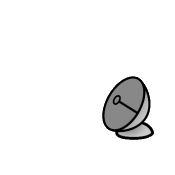
A lot of data are constantly generated by the different subsystems of PicSat: monitoring data from the different sensors, event reports from the On-Board Computer, science data from the payload, etc. Getting these data back to Earth is of prime importance to our science and operation teams.
To do so, we can request the On-Board computer to beam down data contained in its memory (volatile memory, or one of the on-board SD cards). We can select data of any given type, and from any given period of interest. Of course, there is no point on sending data via the radio-link when the satellite is above the ocean, with no one listening to it. Fortunately, with the help of all the 101 radio-amateurs who are listening to PicSat, we have an amazing ground coverage!
Requesting data from the satellite is a rather intricate business. Beaming down data is the most power-consumming possible activity, and we need to make sure that the satellite do not emit continuously for too long at a single time. This is why we have access to a "clearSchedulerFifo" command, whose effect is to shut down the data download emission, no matter what. When we decide to schedule a data download, say from time t1 to time t2, we first schedule the clearSchedulerFifo command, and make sure that the satellite acknowledges its reception before requesting the data download. And there is more: we can only send the commands to download the data when the satellite is above our ground station, in Meudon, France. So we have to think in advance, and make sure that there will be a pass of the satellite above Meudon before the expected start time of the data download.
To keep track of all of that, each request has a given "status", which changes depending on what is happenning. A request can be:
| Orbit | Target station | Start of emission | End of emission | Data type | Status |
|---|---|---|---|---|---|
| - | No request scheduled | No request scheduled | No request scheduled | No request scheduled | No request scheduled |
The PicSat onboard FM transponder has been successfully tested during a short emission on Thursday, Februray 15, 2018. Its good performance have been confirmed, and we are now working toward making it available to the amateur community.